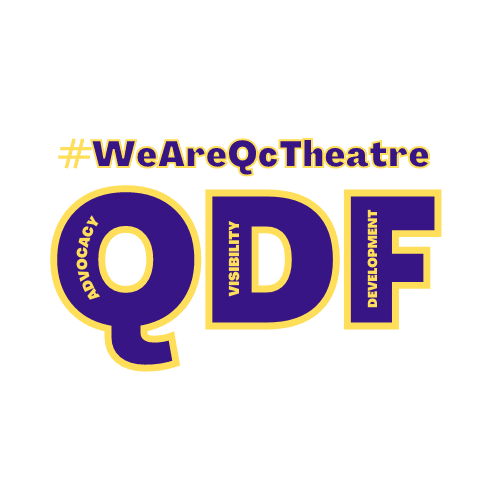Montreal Monsters: Profile on Scapegoat Carnivale’s Co-Director, Joseph Shragge
By Bhavna Patel
Writer Joseph Shragge put his first show together with his current working partner, actor/director Alison Darcy, back in 2003. The play was one that he had written himself, titled The Scavenger’s Daughter. “We were up all night with the designer, sewing costumes, building a sad building, we had all sorts of professionals and non-professionals creating this crazy world,” he recalled. The show, which was hosted at an architecture collective garage, ended up doing very well. Shragge found the entire experience dynamic and interesting, so much so that the duo teamed up with stage manager Melanie St-Jacques to start their own Montreal theater company, called Scapegoat Carnivale.
Photo by Helena Vallès
Twenty two years later, their latest play, Ricki, written by Shragge and co-directed by him alongside Darcy, was showcased at the Centaur Theatre from January 30 to February 3, as part of the theatre’s Wildside Festival*. The Wildside Festival aims to support local artists, independent theatre work and create a platform for experimentation.
Shragge wrote the play five years ago, right around the time that he was expecting his first child. “I decided to try to write a piece as fast as I could because I figured it’d be a long time before I would have time to write again.” He told himself to write the beginning, middle and the end of a story, which he knew he wanted to have played out linearly. “So I wrote this bizarre three-hander. Everything else shifted a lot as I wrote it. And then I put it down for a long time,” Shragge recalled.
L to R: Julie Tamiko Manning and Lior Maharjan
Image courtesy of the Scapegoat Carnivale Instagram.
Ricky reveals the unfolding of a delicate relationship between a newly single mother, played by Julie Tamiko Manning, and her 10-year old son, played by Lior Maharjan. After losing everything, the mother and son move to Montreal to rebuild their lives. Their relationship becomes shaky as they try to adjust to their new living quarters set in a seedy neighbourhood on Parc Avenue. There, they are confronted by a peculiar man, played by Jon Lauchlan Stewart, along with monsters real and imaginary, also known as the “Thing.” From there, the story takes a surreal, witty, fantastical, and at times, spooky, turn.
Shragge had Michael Chemers, a U.S. Monster’s scholar, in mind during the play’s development and conceptualization of the “Thing.” According to Chemers, monsters are purely a cultural phenomenon which manifest the way a culture sees itself and its interpretation of others.
Photo by Helena Vallès
While writing the play, Shragge didn’t put much thought into what the monster or creature character would actually look like. “I just wrote ‘a “thing” appears in the stage directions,’” he recollected. Shragge and the team worked together tirelessly to determine how this “thing” would look and feel and move on stage before a live audience.
L to R: Jon Lauchlan Stewart and Lior Maharjan.
Photo by Helena Vallès
In the end, Sophie El-Assaad, the creature costume designer, came up with an incredible design for the beer-guzzling creature worn by Stewart, which looked like a large hybrid of a seal, bear and elephant. Stewart managed to slither through the stage and muffle out his lines in the hefty costume. The entire team’s hard work had paid off, as the show was a hit.
A slew of collaborators helped to get the project finalized. Movement, for instance, was incorporated very early on in the process with choreographer, Andrew Turner. And Deena Azeez covered dramaturgy, helping to go over drafts and the readings.
“We rehearsed more hours than usual, which I think really helped keep a lot of stress out of the room and give us all time to find the voice and style of the piece,” Shragge said. “We were fortunate that they worked so well together and really built off each other’s impulses. We were incredibly lucky to have this cast.” Many in the audience would have agreed.
Looking back to five years ago, Shragge realizes that the normal anxieties he experienced around becoming a new parent had subconsciously crept into his writing of Ricki.
Interestingly, in an interview, Chemers observed that we are attracted to the monster because it has an anxiety relieving function. “[Monsters] can be read, or read against, to uncover important messages about the anxieties and hopes of the individuals and societies that create and maintain them,” he said. Chemers further added that monsters could be of therapeutic value.
Perhaps it did just that for Shragge, who is now the proud father of two children. And while he admits he has less time to spend on writing, he continues to work on his creative pursuits. He and Darcy are currently working on a version of Aristophanes’ The Birds for young audiences.
Shragge has also spent some time researching obsolete media, especially video cassettes and video stores. “I grew up near Snowdon Metro, when Queen Mary had all these video stores that obviously all went out of business,” he said. “I imagined, ‘What if there was one that somehow managed to hang on?’” And with that, perhaps another storyline is brewing for the writer.
Photo by Helena Vallès
*Since this article was written, Centaur Theatre’s Wildside Festival has been renamed to WINTERWORKS.





